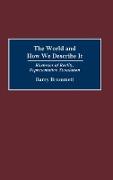- Start
- The World and How We Describe It
The World and How We Describe It
Angebote / Angebote:
Brummett explores the ways people use three key terms-reality, representation, and simulation-as rhetorical devices with political and social effect. Human perception, language, and aesthetics experiences are the bases for the fluidity among these terms. Each term's rhetoric is illustrated in an analysis of texts in popular culture: William Gibson's novels, the usenet group rec.motorcycles, and the film Groundhog Day.
Brummett explores the ways people use three key terms-reality, representation, and simulation-as rhetorical devices with political and social effect. People write and speak as if there were such things as reality, representation, and simulation. People treat the terms as if they were clearly referential and as if those referents were clearly distinct. But what kind of political, social work do people do when they write and speak in those terms? What kind of claim is being made, or accusation leveled when such a term is used? How do the dimensions and parameters of meaning facilitated by each term work in the management and distribution of power?
These are questions of rhetoric, the manipulation of signs and symbols for influence and effect. Brummett illustates the rhetoric of reality in a critical analysis of William Gibson's science fiction novels. The rhetoric of representation is shown in discusions on the usenet group rec.motorcyles. The rhetoric of simulation is explained through the film Groundhog Day. Of particular interest to scholars, students, and researchers involved with rhetoric and popular culture, media, communication, and technology, and the literature of science and science fiction.
Folgt in ca. 15 Arbeitstagen


